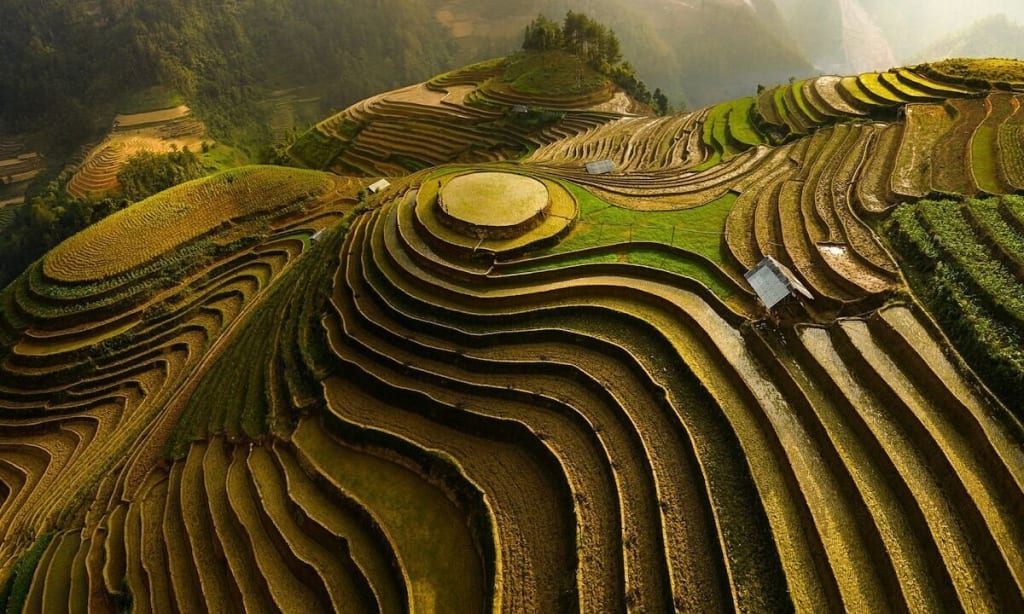What was the Inca terrace agriculture?
Incan Agricultural Terraces: Ingenious farming methods used to grow crops on steep mountain slopes, demonstrating advanced agricultural engineering.

Inca terrace agriculture, also known as Andean or mountain agriculture, was a sophisticated agricultural system developed by the Inca Empire in the Andean region of South America. This innovative method of farming allowed the Inca to cultivate crops such as maize (corn), potatoes, quinoa, and various root vegetables in the steep and rugged terrain of the Andes Mountains.
Historical Context
The Inca Empire, which flourished from the 15th century until the Spanish conquest in the 16th century, encompassed a vast territory that stretched along the western coast of South America, including parts of present-day Peru, Ecuador, Bolivia, and Chile. The rugged terrain of the Andes presented significant challenges for agriculture due to steep slopes, rocky soil, and varying microclimates.
Terrace Construction and Design
Terrace agriculture was a monumental engineering achievement that enabled the Inca to overcome these challenges:
1. Terrace Construction: Inca farmers constructed extensive networks of terraces, known as andenes, along the sides of mountains and hillsides. These terraces were built by painstakingly cutting into the natural slopes and building retaining walls using stones, gravel, and earth. The walls were often angled and designed to prevent erosion and retain water, creating flat platforms for planting crops.
2. Water Management: Inca terrace agriculture was also supported by sophisticated irrigation systems. The Inca developed a network of canals, aqueducts, and reservoirs to capture and distribute water from mountain streams and rainfall to the terraced fields. These irrigation systems allowed for controlled watering of crops and helped mitigate the effects of drought and irregular rainfall patterns.
3. Microclimates and Ecosystems: The terraces created microclimates that were conducive to agriculture at varying altitudes. Different levels of terraces could support different crops depending on their temperature and moisture requirements. This vertical zoning allowed the Inca to cultivate a wide variety of crops, ranging from tropical fruits at lower elevations to cold-resistant grains and tubers at higher elevations.
Agricultural Practices
Inca terrace agriculture was highly intensive and labor-intensive:
1. Crop Rotation and Diversity: The Inca practiced crop rotation and diversified planting to maintain soil fertility and productivity. They planted complementary crops together, such as maize with beans and squash (known as the Three Sisters), which mutually benefited each other in terms of nutrients and growth.
2. Labor Force: Constructing and maintaining terraces required a significant labor force. Inca farmers, supported by state-sponsored labor obligations (mit'a), worked collectively to build and manage the terraces. This communal approach ensured the sustainability and productivity of terrace agriculture across the empire.
Economic and Cultural Significance
Terrace agriculture played a crucial role in the economic and cultural life of the Inca Empire:
1. Food Security: By maximizing agricultural productivity in challenging environments, terrace agriculture provided a stable food supply for the growing population of the empire. Surpluses of crops were stored in granaries (qullqas) and redistributed as needed to support urban centers, military expeditions, and religious ceremonies.
2. Cultural Identity: Terrace agriculture was deeply intertwined with Inca religion and cosmology. The agricultural calendar, rituals, and festivals revolved around planting, harvesting, and honoring the agricultural deities (such as Pachamama, the Earth Mother). Terrace agriculture symbolized the Inca's harmonious relationship with nature and their ability to adapt and thrive in diverse ecological settings.
Legacy and Modern Relevance
Inca terrace agriculture left a lasting impact on the landscape and culture of the Andean region:
1. Environmental Sustainability: The terraces continue to shape the landscape and support local agriculture in modern-day Peru, Bolivia, and Ecuador. Some terraces are still actively cultivated by indigenous communities using traditional agricultural techniques.
2. Tourism and Heritage: Inca terraces, such as those at Machu Picchu and the Sacred Valley, attract millions of tourists each year. They serve as iconic symbols of Inca engineering ingenuity and cultural heritage, showcasing the enduring legacy of terrace agriculture in the Andean region.
Conclusion
Inca terrace agriculture exemplified the Inca Empire's remarkable engineering prowess, environmental stewardship, and cultural resilience. By harnessing the natural landscape through terracing and irrigation, the Inca were able to sustainably cultivate a diverse array of crops in challenging mountainous terrain. This agricultural system not only supported the empire's economic prosperity but also reinforced its cultural identity and spiritual connection to the land. Today, the legacy of Inca terrace agriculture continues to inspire admiration and appreciation for the ingenuity and adaptability of ancient Andean civilizations.
About the Creator
Marveline Merab
“History never repeats itself. Man always does.”
― Voltaire
Enjoyed the story? Support the Creator.
Subscribe for free to receive all their stories in your feed. You could also pledge your support or give them a one-off tip, letting them know you appreciate their work.






Comments
There are no comments for this story
Be the first to respond and start the conversation.